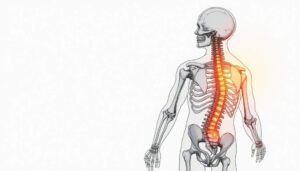Pain is a complex and multifaceted experience, often signaling that something is amiss in our bodies. In the realm of pain management, distinguishing between nociceptive pain and neuropathic pain is crucial for effective treatment. This article delves into the nuances of these two pain types, highlighting their differences and implications for treatment.
Nociceptive Pain: The Body’s Alarm System
Nociceptive pain acts as a warning system, alerting us to potential or actual tissue damage. This type of pain often results from physical injuries such as cuts, bruises, or fractures. It can also stem from internal issues like muscle strain, arthritis, or conditions causing inflammation. The sensation of nociceptive pain is typically described as sharp, aching, or throbbing. Understanding the nature of nociceptive pain helps in formulating appropriate responses to these bodily alarms.
Neuropathic Pain: When the Nerves Misfire
In contrast, neuropathic pain arises from damage or malfunction within the nervous system itself. Conditions like diabetes, multiple sclerosis, or shingles can lead to this type of pain. It’s characterized by sensations of burning, shooting, or electric shock-like pain, often chronic and persisting long after the initial injury has healed. Recognizing neuropathic pain is essential in tailoring treatment that targets nerve-related issues.
Dissecting the Difference Between Nociceptive and Neuropathic Pain
The difference between nociceptive and neuropathic pain lies primarily in their causes and sensations. Nociceptive pain originates from tissue damage outside the nervous system, while neuropathic pain is a result of direct nerve damage. Their treatment approaches also differ significantly, with nociceptive pain often responding well to traditional painkillers and anti-inflammatory drugs, whereas neuropathic pain may require more specialized medications like antidepressants or anticonvulsants.
Treatment Approaches: Tailoring to Pain Types
Addressing the question of what is nociceptive pain versus neuropathic pain in terms of treatment, it becomes evident that a one-size-fits-all approach is ineffective. For nociceptive pain, over-the-counter pain relievers and physical therapy are often beneficial. Neuropathic pain, however, might require a combination of medication, physical therapy, and sometimes psychological support to manage the chronic nature of the pain.
Seeking Expertise at APAC Centers for Pain Management
Navigating the complexities of pain can be daunting. At APAC Centers for Pain Management, experts specialize in diagnosing and treating various pain types. If you’re struggling with pain and are based in Indiana, consider reaching out to the pain clinic in Indiana at APAC. Our team is dedicated to providing individualized care, ensuring you receive the most effective treatment for your specific pain type.







